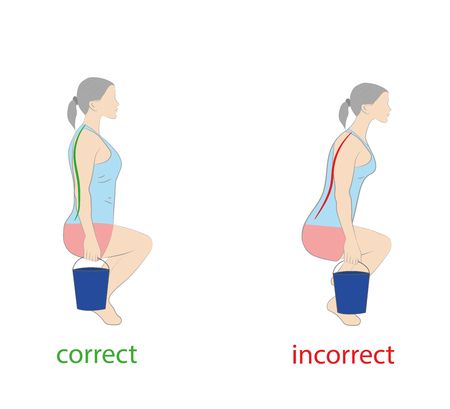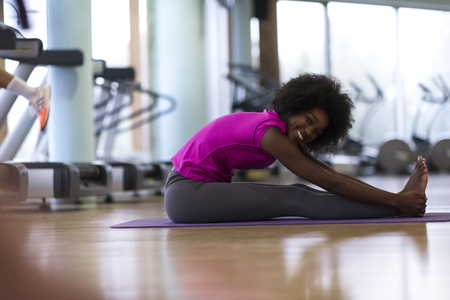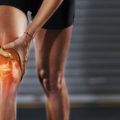Understanding Lower Back Pain
Common Causes of Lower Back Pain
Lower back pain is one of the most frequent reasons Americans visit their doctors or physical therapists. It can affect people of all ages and lifestyles. Some common causes include muscle strains, ligament sprains, herniated discs, and conditions like arthritis or sciatica. Everyday activities such as lifting heavy objects incorrectly, sitting for long periods at a desk, or sudden awkward movements can also lead to lower back pain.
Table: Common Causes and Risk Factors
| Cause | Description | Risk Factors |
|---|---|---|
| Muscle Strain | Overstretching or tearing muscles in the lower back | Poor posture, heavy lifting, sports injuries |
| Disc Herniation | Cushion between spine bones slips out of place | Aging, repetitive motion, trauma |
| Arthritis | Inflammation of spinal joints | Age over 50, genetics, previous injuries |
| Sciatica | Nerve pain radiating down the leg from lower back issues | Sedentary lifestyle, obesity, diabetes |
| Poor Posture | Sitting or standing improperly for long periods | Desk jobs, lack of ergonomic support, inactivity |
How Physical Therapists Assess Lower Back Pain in the U.S.
In the American healthcare system, physical therapists play a key role in evaluating lower back pain. During your first visit, a physical therapist will ask about your medical history and symptoms. They may perform a physical exam to check your posture, range of motion, muscle strength, and flexibility. Sometimes special tests are used to determine what movements cause pain or weakness.
Typical Assessment Steps:
- Patient Interview: Discussing when and how the pain started, daily habits, and any past injuries.
- Physical Exam: Observing movement patterns and checking for muscle tightness or joint stiffness.
- Pain Mapping: Asking you to rate your pain and point out its exact location.
- Functional Tests: Assessing how well you can perform daily tasks like walking, bending, or standing up.
- Referral for Imaging (if needed): Recommending X-rays or MRI if symptoms suggest serious underlying issues.
This thorough approach helps physical therapists create personalized treatment plans that address both the symptoms and root causes of lower back pain within the American healthcare context.
2. Core Strengthening and Stabilization
Strengthening your core is one of the key physical therapy techniques for managing lower back pain. In the United States, physical therapists often recommend specific exercises that target the muscles supporting your spine. These exercises are evidence-based, meaning research has shown they are effective in improving back stability and reducing pain. Let’s take a closer look at some of the most common core exercises you might encounter during physical therapy sessions.
Why Core Strength Matters
Your core includes not just your abdominal muscles, but also the muscles in your lower back, hips, and pelvis. A strong core helps support your spine, improves posture, and can prevent future injuries. When these muscles are weak, extra stress can be placed on your lower back, making pain worse or more likely to return.
Popular Core Exercises Used in Physical Therapy
| Exercise Name | Description | How It Helps |
|---|---|---|
| Plank | Hold your body straight and stiff while supported by your forearms and toes. | Engages multiple core muscles and helps improve overall stability. |
| Bridge | Lie on your back with knees bent, then lift your hips toward the ceiling. | Strengthens glutes, lower back, and abs for better support of the spine. |
| Bird Dog | Kneel on all fours, extend one arm and the opposite leg simultaneously. | Improves balance and coordination while activating deep core muscles. |
| Dead Bug | Lie on your back with arms up and knees bent; slowly lower opposite arm and leg. | Targets deep abdominal muscles without putting strain on the lower back. |
Tips for Performing Core Exercises Safely
- Start slow: Begin with fewer repetitions and increase as you get stronger.
- Focus on form: Quality is more important than quantity—keep movements controlled.
- Breathe: Don’t hold your breath during exercises; exhale during effort.
- Pain check: Stop if you feel sharp pain or discomfort in your lower back.
- Consult a professional: Ask a licensed physical therapist for personalized guidance if needed.
The Takeaway on Core Strengthening
Building a stronger core is a practical way to manage lower back pain and protect your spine from further issues. By incorporating these evidence-based exercises into your routine—with guidance from a physical therapist—you can make real progress toward a healthier, more comfortable back.

3. Manual Therapy Approaches
Manual therapy is a key part of physical therapy for lower back pain in the United States. This hands-on approach helps reduce pain, improve mobility, and support healing. Therapists use their hands to apply pressure or move muscles and joints in specific ways. Here are some common manual therapy techniques you might experience in American clinics:
Soft Tissue Mobilization
This technique focuses on loosening tight muscles and tissues around the lower back. By gently massaging or stretching these areas, therapists can help decrease muscle tension and boost blood flow. Soft tissue mobilization may include:
| Technique | Purpose | What to Expect |
|---|---|---|
| Myofascial Release | Relieves tension in connective tissues | Gentle sustained pressure applied to tight spots |
| Trigger Point Therapy | Targets knots in muscles that cause pain | Direct pressure on tender points to release tension |
| Deep Tissue Massage | Addresses deeper layers of muscle and fascia | Slower, firmer strokes to reach underlying tissues |
Joint Mobilization and Manipulation
Joint mobilization involves small, controlled movements of the spine or pelvis to increase flexibility and decrease stiffness. In some cases, therapists may use quick, gentle thrusts known as joint manipulation (sometimes called spinal adjustments) to restore normal motion and relieve discomfort.
Benefits of Manual Therapy for Lower Back Pain
- Pain relief by reducing muscle spasms and joint restrictions
- Improved range of motion in the lower back and hips
- Enhanced circulation to promote healing
- A personalized approach based on your unique symptoms and needs
What to Expect During a Session
Your therapist will assess your condition and choose the most suitable manual therapy techniques. Sessions usually last between 15–30 minutes as part of your overall treatment plan. Communication is important—always let your therapist know if you feel any discomfort during treatment so they can adjust their approach.
4. Patient Education and Ergonomics
Understanding the Importance of Patient Education
Physical therapists in the United States put a strong focus on educating patients as part of managing lower back pain. Teaching people about their bodies, posture, and movement habits can make a big difference in both preventing and managing pain. Therapists take time to explain how daily activities impact the spine and what changes can help reduce stress on the lower back.
Key Topics Covered During Patient Education
| Topic | Why It Matters | Tips from Therapists |
|---|---|---|
| Posture | Poor posture puts extra strain on the lower back muscles and spine. | Sit with feet flat, shoulders relaxed, and use lumbar support when needed. |
| Proper Lifting Techniques | Lifting incorrectly is a common cause of injury. | Bend at your knees, not your waist. Keep the object close to your body and avoid twisting while lifting. |
| Workplace Ergonomics | Many Americans spend hours sitting at desks, leading to back discomfort. | Adjust chair height, monitor position, and take breaks to stand or stretch every hour. |
How Therapists Teach Ergonomics in Real Life Settings
Therapists often visit workplaces or use real-life examples to help patients make practical adjustments. They might demonstrate how to set up a home office or suggest small changes like using a standing desk or adding a footrest. Simple reminders like setting phone alarms for movement breaks are also recommended.
Common Ergonomic Adjustments for Home and Office
- Chair Support: Use an ergonomic chair with good lumbar support.
- Monitor Height: Top of the screen should be at eye level.
- Keyboard Placement: Keep wrists straight and elbows at 90 degrees.
- Frequent Movement: Stand up and stretch every 30–60 minutes.
The Role of Consistency
Therapists emphasize that making these changes part of your daily routine is key. Consistent use of proper techniques at home, work, and during exercise helps prevent future episodes of lower back pain and supports long-term recovery.
5. Integrating Exercise and Activity Modification
Making Movement a Part of Everyday Life
For many Americans, lower back pain can make everyday activities seem challenging. Physical therapists emphasize that staying active—rather than resting too much—is essential for recovery and long-term relief. Integrating safe exercises and modifying how you move can help manage pain, prevent flare-ups, and support overall well-being.
Safe Aerobic Exercises for Lower Back Pain
Low-impact aerobic activities are often recommended because they boost circulation, improve mood, and strengthen your core without putting too much strain on your back. Here’s a comparison of common aerobic exercises:
| Exercise | Benefits | Tips for Safety |
|---|---|---|
| Walking | Improves endurance; easy to adjust pace and duration | Wear supportive shoes; walk on even surfaces |
| Stationary Biking | Gentle on joints; strengthens legs and core | Adjust seat height for comfort; avoid hunching forward |
| Swimming/Water Aerobics | Reduces pressure on the spine; full-body workout | Choose warm water pools; avoid twisting motions |
| Elliptical Trainer | Smooth movement; low joint impact | Maintain upright posture; use handlebars for balance |
Functional Exercises You Can Do at Home
Physical therapists in the U.S. focus on functional training—exercises that mimic daily movements—to help people regain confidence in their bodies. Here are some simple routines commonly recommended:
- Bridges: Lying on your back with knees bent, lift your hips to engage your core and glutes.
- Knee-to-chest stretch: While lying down, gently pull one knee to your chest to relieve tension.
- Pelvic tilts: Flatten your lower back against the floor by tightening your abdominal muscles.
- Bent-knee marches: March in place while sitting or standing to activate hip flexors and abdominals.
- Wall sits: Slide down a wall into a seated position to build leg strength without stressing the lower back.
Sample Weekly Exercise Schedule for Beginners
| Day | Aerobic Activity (20-30 min) | Functional Exercises (10-15 min) |
|---|---|---|
| Monday | Walking | Pelvic tilts, Bridges |
| Wednesday | Stationary Biking | Knee-to-chest stretch, Wall sits |
| Friday | Swimming/Water Aerobics | Bent-knee marches, Bridges |
| Saturday or Sunday | Your choice (easy pace) | Pelvic tilts, Wall sits |
Tweaking Daily Activities to Prevent Flare-Ups
A big part of physical therapy in America is teaching people how to adapt their routines to protect their backs. This means making small changes throughout the day—at work, home, or during leisure time—to avoid overloading the spine.
Everyday Activity Modifications Table
| Activity Type | Status Quo | User-Friendly Adjustment |
|---|---|---|
| Lifting groceries or kids | Bending at waist | Bend at knees, keep back straight, hold items close to body |
| Sitting at desk | Sitting for hours without breaks | Sit with feet flat, stand up every 30-60 minutes, use lumbar support pillow |
| Laundry/housework | Bending repeatedly or twisting spine | Kneel or squat instead of bending, pivot feet rather than twist |
| Mowing lawn/gardening | Pushing/pulling heavy tools continuously | Pace yourself, switch hands regularly, take frequent breaks |
| Couch time/TV watching | Lounging slouched for long periods | Sit upright with cushion support, get up during commercials or every 30 minutes |
The American Approach: Balance Activity with Rest and Recovery
Your Physical Therapist’s Role
A licensed physical therapist will work closely with you to create a custom plan that fits your lifestyle and goals. They’ll teach you how to spot early warning signs of overdoing it and help you gradually progress as your strength builds.
Troubleshooting: What If Pain Increases?
If you experience sharp pain or new symptoms while exercising or changing activities, stop right away and contact your healthcare provider or physical therapist. It’s normal to feel some soreness as you become more active, but ongoing pain may mean something needs adjusting.
The key takeaway is simple: Keep moving in ways that feel safe for you and don’t hesitate to ask for professional guidance as you build healthier habits that support your lower back every day.


